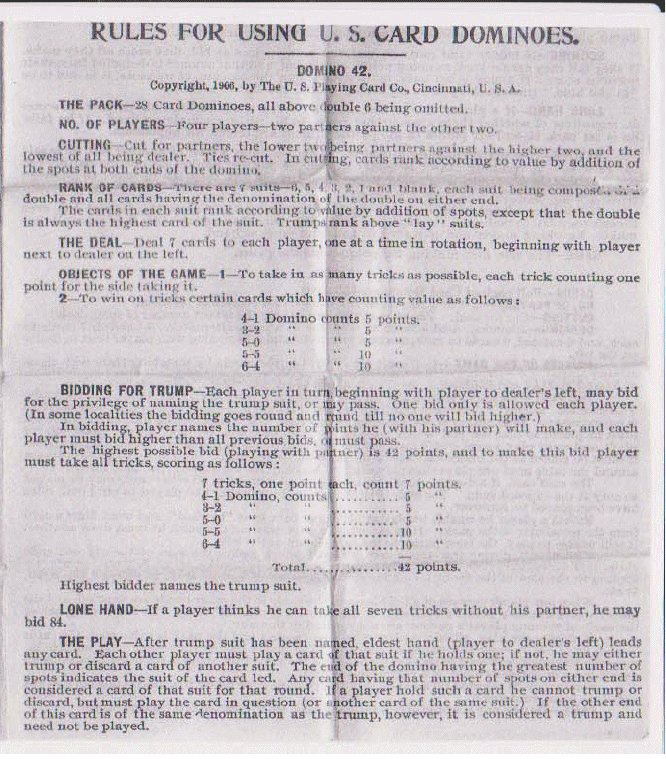
Larger sets such as double-21 (253 tiles) could theoretically exist, but they seem to be extremely rare if not nonexistent, as that would be far more than is normally necessary for most domino games, even with eight players. Each progressively larger set increases the maximum number of pips on an end by three so the common extended sets are double-nine (55 tiles), double-12 (91 tiles), double-15 (136 tiles), and double-18 (190 tiles), which is the maximum in practice. However, this is a relatively small number especially when playing with more than four people, so many domino sets are "extended" by introducing ends with greater numbers of spots, which increases the number of unique combinations of ends and thus of pieces. The spots from one to six are generally arranged as they are on six-sided dice, but because blank ends having no spots are used, seven faces are possible, allowing 28 unique pieces in a double-six set. The traditional domino set contains one unique piece for each possible combination of two ends with zero to six spots, and is known as a double-six set because the highest-value piece has six pips on each end (the "double six"). Sometimes, the tiles have a metal pin (called a spinner or pivot) in the middle.

Such sets are lightweight, compact, and inexpensive, and like cards are more susceptible to minor disturbances such as a sudden breeze. Occasionally, one may find a domino set made of card stock like that for playing cards. Modern sets also commonly use a different color for the dots of each different end value (one-spots might have black pips while two-spots might be green, three red, etc.) to facilitate finding matching ends. Modern commercial domino sets are usually made of synthetic materials, such as ABS or polystyrene plastics, or Bakelite and other phenolic resins many sets approximate the look and feel of ivory while others use colored or even translucent plastics to achieve a more contemporary look. These sets have a more novel look, and the often heavier weight makes them feel more substantial also, such materials and the resulting products are usually much more expensive than polymer materials. Alternatively, domino sets have been made from many different natural materials: stone (e.g., marble, granite or soapstone) other woods (e.g., ash, oak, redwood, and cedar) metals (e.g., brass or pewter) ceramic clay, or even frosted glass or crystal.

Some sets feature the top half thickness in MOP, ivory, or bone, with the lower half in ebony.

The earliest mention of dominoes is from Song dynasty China found in the text Former Events in Wulin by Zhou Mi (1232–1298). Another form of entertainment using domino pieces is the practice of domino toppling.Ī boxed domino set dating from the late 19th or early 20th century A domino set is a generic gaming device, similar to playing cards or dice, in that a variety of games can be played with a set. The traditional European domino set consists of 28 tiles, also known as pieces, bones, rocks, stones, men, cards or just dominoes, featuring all combinations of spot counts between zero and six.

The gaming pieces make up a domino set, sometimes called a deck or pack. The backs of the tiles in a set are indistinguishable, either blank or having some common design. Each end is marked with a number of spots (also called pips or dots) or is blank. Each domino is a rectangular tile, usually with a line dividing its face into two square ends. For other uses, see Domino (disambiguation).ĭominoes is a family of tile-based games played with gaming pieces, commonly known as dominoes.


 0 kommentar(er)
0 kommentar(er)
